At the beginning of my weight-loss journey, I initially cut many of my favorite foods from my diet, simply because they were too high in calories. After a while, I realized it’s impossible to live in a dieting bubble; there’s always a party, a celebration or a craving to contend with. So, I began to rethink my strategy. Instead of compiling a list of “bad” foods, I embarked on a quest to lighten up what would normally be very calorie-laden dishes.
At first, I tried the age-old substitutes, like replacing oil and eggs with applesauce in baked goods. Sure, my cakes and muffins cooked. But they certainly didn’t taste very good. But I kept experimenting, and through the years, I’ve discovered some ingredient substitutions that are so effective no one would notice the difference. The key is finding alternatives with similar tastes and textures. With a little thoughtful planning, it’s possible to create flavorful recipes that are low-calorie, low-fat and incredibly tasty.
Here are 10 brilliant swaps to get you started creating healthier, more diet-friendly meals.
1. Skinny dips. Chips and dips are among the most fattening, high-caloric appetizers. One of my favorite dips is guacamole. While avocados are a great source of healthy fat, they’re extremely calorie-dense. A great calorie-reducing swap is to use half the avocados called for in your recipe and substitute pureed frozen peas or edamame. You can also use pureed fresh asparagus if you have some on hand. Because you are also adding spices such as garlic, cumin, cilantro and hot sauce, the replacement isn’t noticeable. You get the great creaminess without all the calories. You can also lighten up spinach dip, which is traditionally made using fattening mayonnaise or sour cream, with chopped frozen spinach, fat-free Greek yogurt, packaged dry ranch dressing and chopped water chestnuts. In fact, Greek yogurt is so versatile that it can also be used to replace the sour cream, mayonnaise or creamy salad dressing in any dip recipe with delicious results.
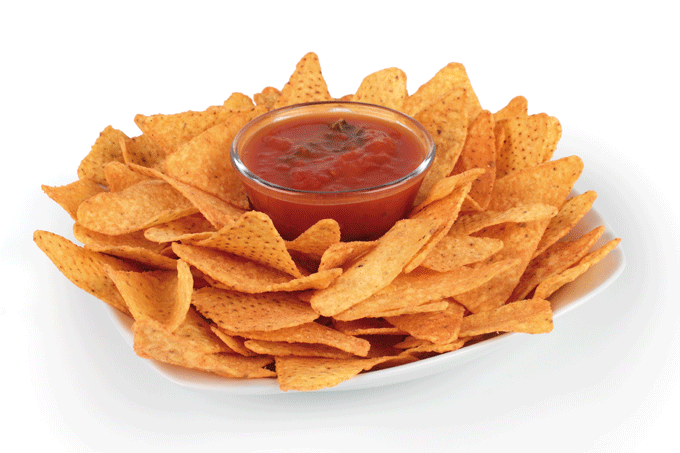
Never thought of making your own tortilla chips? They’re so easy and so much healthier than store-bought varieties.
2. Chip away at calories. A good dip requires a worthy chip, right? Yes, but as you probably know, the calorie count on most chips can add up. Most store-bought versions are fried, plus it’s hard to limit yourself to a serving size, especially when that yummy dip is just sitting there waiting to be scooped up. Many people don’t know they can make their own low-cal, low-fat tortilla chips in just a few minutes. Start with any low-carb tortilla that’s about 150 calories or less. (My personal favorite is Smart and Delicious tortillas from La Tortilla Factory, but there are numerous options, including flavored varieties.) Lightly spray a cookie sheet with non-stick spray. Cut the tortilla into 10-12 wedges using a pizza cutter. Place the wedges on the cookie sheet and lightly spray them with cooking spray. Season as you like with garlic, salt, pepper, paprika, mustard powder or whatever flavors you love. Bake at 400 degrees until the tortillas are crispy and lightly browned.
3. Veg out. Your favorite vegetable is another great substitute for those fattening chips. Sliced zucchini, cucumbers and peppers make low-calorie, nutritious “chips” for your favorite dip. Think of them as a new spin on those ubiquitous crudités, as well as a great way to sneak more veggies into your daily diet.
4. A not-so-crumby idea. Sometimes, swapping out just an ingredient or two in a recipe is enough to make it calorie friendly. For example, breadcrumbs are one ingredient that can quickly add calories to any dish. However, it couldn’t be easier to make your own low-calorie breadcrumbs at home. Start with four to six slices of any low-calorie white bread. If you’ve planned this ahead, leave the bread out on a counter the night before you need it. If you’re a last-minute type, lightly toast the bread until it’s crisp but not brown, or heat it in the oven at 350 degrees until it’s crispy. Place the bread in a food processor or blender and add seasonings such as garlic, salt, basil and oregano before processing. Unused breadcrumbs can be saved in a sealed container for up to one week in the refrigerator.
5. Easy as pie. Another food that can be a dietary nightmare is pizza. Many of the calories are in the crust, but the traditional pie base is easily substituted with healthier options. Low-calorie tortillas are one way to go. Just make sure you bake them at 350 degrees for a few minutes before you add the toppings, or they’ll get soggy. Portobello mushrooms also make a great pizza base. Wash and dry them thoroughly before you add sauce or your pizzas will be watery. The pizza sauce itself can also be a source of hidden sugar and carbs. A great sugar-free substitute is simple crushed tomatoes. You can season them however you like and, if you think you’ll miss that sweet overtone, add a drop or two of natural sweetener. You can also use crushed tomatoes instead of jarred pasta sauce, which frequently contains a large amount of added sugar.
6. Mash it up. Many family and holiday dinner menus wouldn’t feel complete without mashed potatoes. But this popular side dish is hazardous to your waistline when traditionally prepared with cream, sour cream and butter. Thankfully, you can make substitutions that no one will notice. Fat-free half-and-half, fat-free sour cream and Greek yogurt all work well, as does a low-calorie butter such as Brummel & Brown. However, my favorite mashed potatoes use none of these ingredients. Instead, I boil the potatoes in chicken broth and then blend the broth into the potatoes to make them creamy. Since potatoes are a carb-heavy vegetable, you can also add to the mash more calorie-friendly vegetables like rutabagas, turnips and my favorite, cauliflower. You can easily replace half of your potatoes with mashed cauliflower; the calorie content will be almost halved, and no one at the table will notice the difference.
7. Straighten up and fry right. Some ingredients that add calories are not even prominent in the recipe itself. Stir-fry dishes are a great example. Vegetables and lean chicken or beef are all healthy ingredients, but most recipes also call for a large amount of oil during preparation. In order to cut fat and calories in a stir-fry dish (or any recipe that involves sautéing a vegetable, garlic or onion), turn to fat-free chicken or vegetable broth. The broth is not only more calorie-friendly than oil, but also adds fantastic flavor.
8. Brownie points. Although the aforementioned applesauce works as an egg and oil substitute in baked goods, it’s hardly the tastiest swap. One of my favorite stand-ins for egg and oil is a can of pureed black beans, which works especially well with a packaged brownie mix. Ghiradelli’s Ultimate Fudge Brownie mix is a great choice, but any mix will work. Puree a 15-ounce can of black beans in a blender. Add that to the brownie mix, stir and bake according to the package directions. You’ll end up with chewy, moist brownies that are also low in calories and fat. In any baking recipe, you can usually substitute half the eggs with egg whites to lower the fat count even more. So, if your cake calls for six eggs, use three eggs and three egg whites. The results will be outstanding.
9. Dress for success. Over the years, I’ve heard many people say they don’t like fat-free dressing or cheese. There’s no rule that reducing calories has to be all or nothing. If you have a great lasagna recipe you’d like to lighten up, start by substituting half the whole-milk ricotta with a fat-free or light version, and do the same with the mozzarella. If you love Caesar dressing, mix one tablespoon of your favorite kind with one tablespoon of a fat-free brand. Most people can’t identify this swap. Again, the trick to successfully substituting ingredients is to find stand-ins with similar tastes and textures, or to combine them with their full-fat counterparts.
10. Crust isn’t a must. Who says pies have to have a crust? With most pies, particularly ones made with fruit, most of the calories are in the crust. Long ago, I invested in a set of ramekins so I could go crustless. Whenever I make apple pie, I prepare the filling the traditional way, but then pour it into the ramekins and top with a homemade crumble made from reduced-fat graham crackers and low-calorie butter spread. This also works for cheesecake, which no one really eats for the crust. Just prepare the regular cheesecake filling (I use reduced-fat cream cheese in the recipe), place into ramekins and cover with a homemade fruit sauce. Quiche also works well without the crust, as do custards such as crème-brulee. Instead of heavy cream and egg yolks, my version includes almond milk and egg whites and tastes just as satisfying without all that extra fat.
Good luck experimenting with food swaps, and please tell us what your favorite food substitutions are!


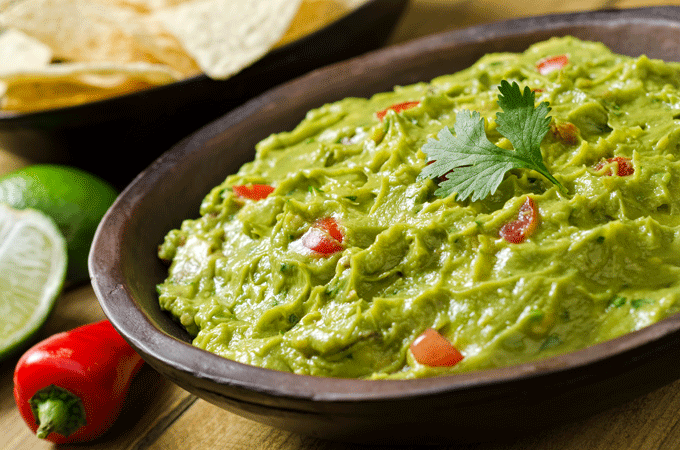
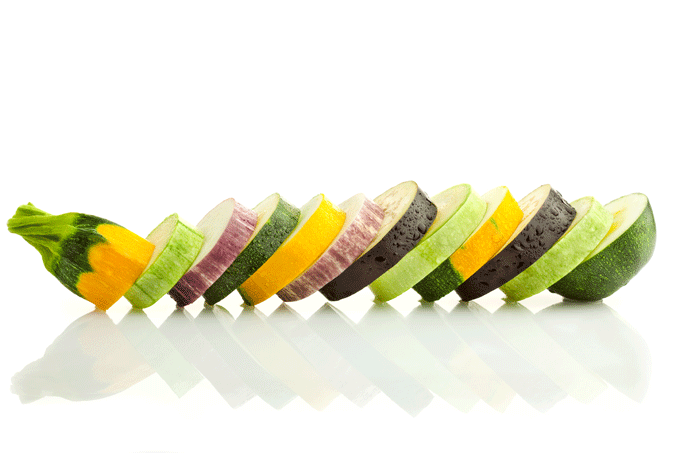
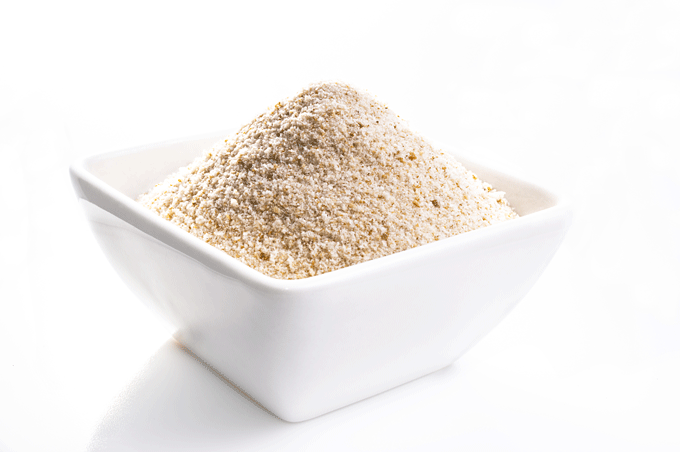
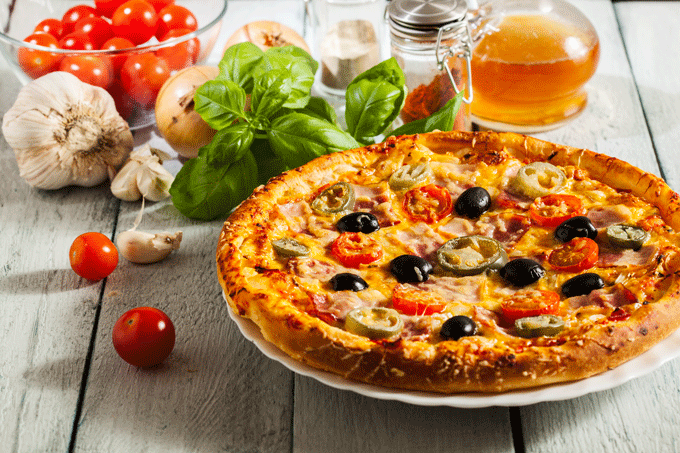
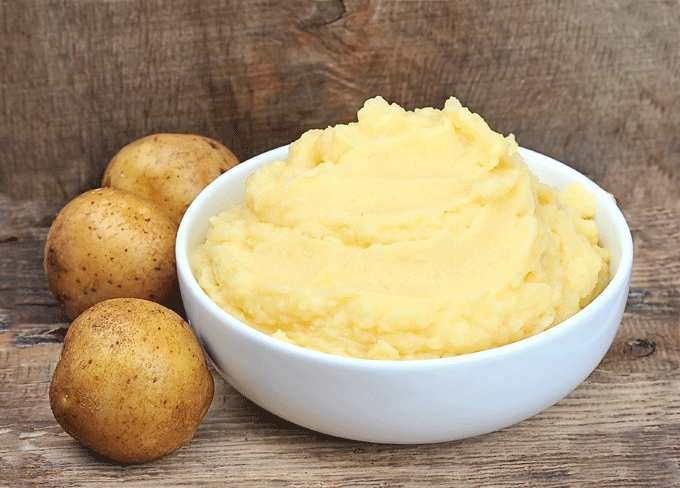
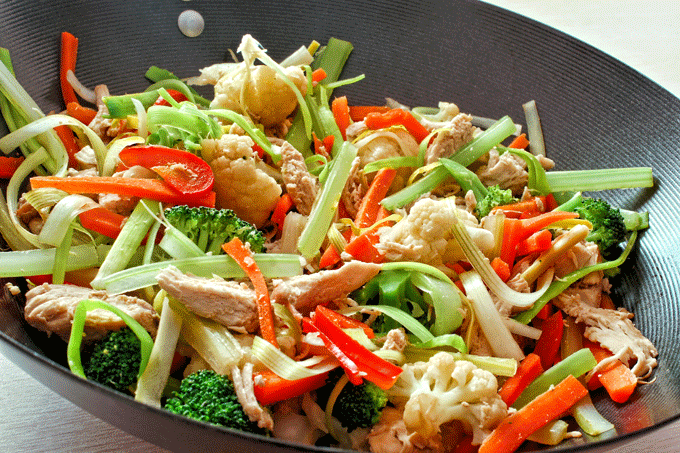
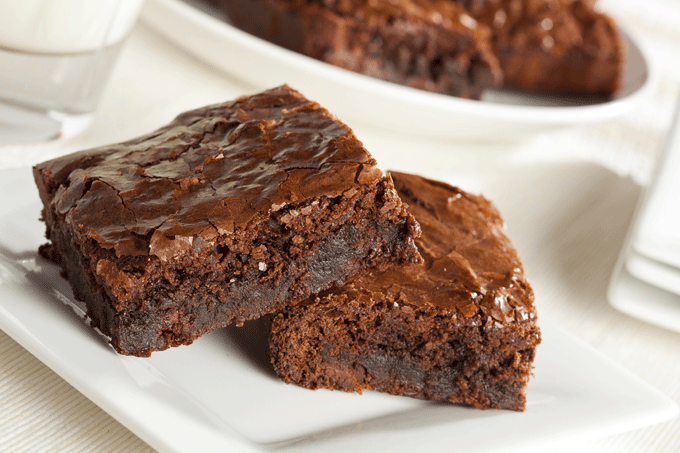
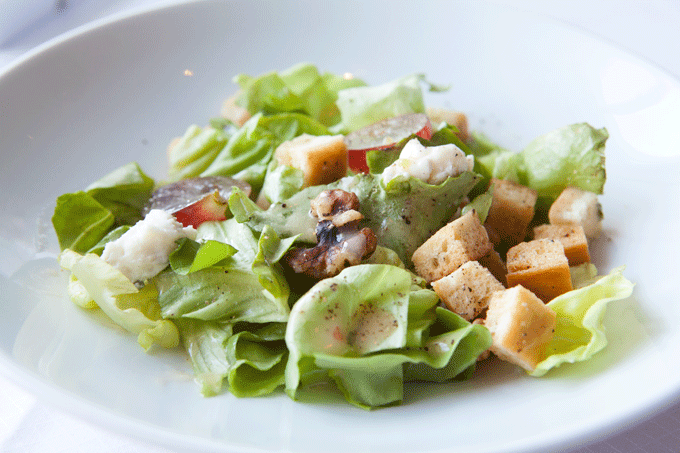
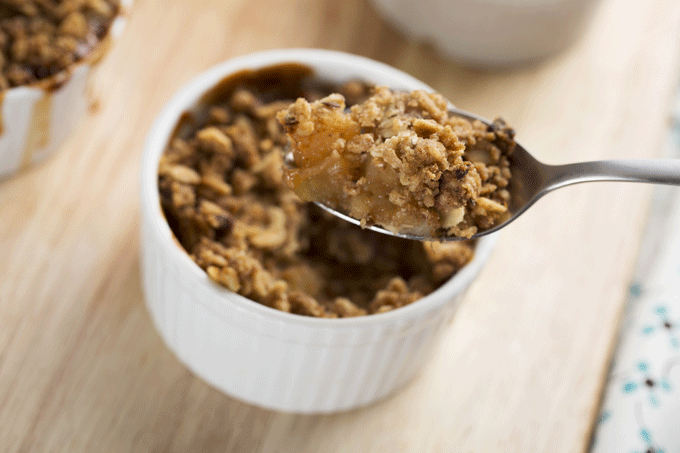



















2014/07/01 at 6:39 pm
I plan to try the edamame in my guacamole first. Edamame is really good for you but I don’t like the taste of it. However, I LOVE guacamole. Mixing it with the guacamole ingredients may just get me to eat it. Thanks Bari!
2014/07/01 at 8:05 pm
Love, love, love all the healthy tips, Bari.
What really great ideas! Thanks!